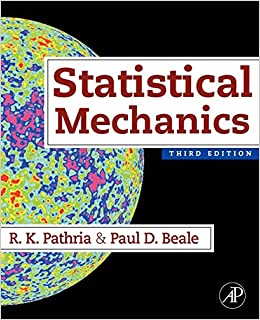For this problem, we integrate (10.2.3) by parts and write [ a_{2} lambda^{3}=-frac{2 pi}{3 k T} int_{0}^{infty}
Question:
For this problem, we integrate (10.2.3) by parts and write
\[
a_{2} \lambda^{3}=-\frac{2 \pi}{3 k T} \int_{0}^{\infty} e^{-u(r) / k T} \frac{\partial u(r)}{\partial r} r^{3} d r
\]
cf. eqn. (3.7.17) and Problem 3.23. With the given \(u(r)\), we get
\[
\begin{aligned}
a_{2} \lambda^{3} & =\frac{2 \pi}{3 k T} \int_{0}^{\infty} e^{-A / k T r^{m}} e^{B / k T r^{n}}\left(\frac{m A}{r^{m-2}}-\frac{n B}{r^{n-2}} \right) d r \\
& =\frac{2 \pi}{3 k T} \int_{0}^{\infty} e^{-A / k T r^{m}} \sum_{j=0}^{\infty} \frac{1}{j !}\left(\frac{B}{k T} \right)^{j}\left(\frac{m A}{r^{m-2+n j}}-\frac{n B}{r^{n-2+n j}} \right) d r \\
& =\frac{2 \pi}{3 k T} \sum_{j=0}^{\infty} \frac{1}{j !}\left(\frac{B}{k T} \right)^{j}\left\{A \Gamma\left(\frac{m-3+n j}{m} \right)\left(\frac{k T}{A} \right)^{(m-3+n j) / m}-\frac{n}{m} B \Gamma\left(\frac{n-3+n j}{m} \right)\left(\frac{k T}{A} \right)^{(n-3+n j) / m} \right\} .
\end{aligned}
\]
From the first sum we take the \((j=0)\)-term out and combine the remaining terms with the second sum (in which the index \(j\) is changed to \(j-1\) );
after considerable simplification, we get
\(a_{2} \lambda^{3}=\frac{2 \pi}{3}\left(\frac{A}{k T} \right)^{3 / m}\left\{\Gamma\left(\frac{m-3}{m} \right)-\frac{3}{m} \sum_{j=1}^{\infty} \frac{1}{j !} \Gamma\left(\frac{n j-3}{m} \right)\left[\frac{B}{k T}\left(\frac{k T}{A} \right)^{n / m} \right]^{j} \right\}\).
For comparison with other cases, we set \(A=A^{\prime} r_{0}^{m}\) and \(B=B^{\prime} r_{0}^{n}\) (so that \(A^{\prime}\) and \(B^{\prime}\) become direct measures of the energy of interaction). Expression (1) then becomes
\(a_{2} \lambda^{3}=\frac{2 \pi}{3} r_{0}^{3}\left(\frac{A^{\prime}}{k T} \right)^{3 / m}\left\{\Gamma\left(\frac{m-3}{m} \right)-\frac{3}{m} \sum_{j=1}^{\infty} \frac{1}{j !} \Gamma\left(\frac{n j-3}{m} \right)\left[\frac{B^{\prime}}{k T}\left(\frac{k T}{A^{\prime}} \right)^{n / m} \right]^{j} \right\}\).
Now, to simulate a hard-core repulsive interaction, we let \(m \rightarrow \infty\), with the result that
\[
\begin{equation*}
a_{2} \lambda^{3}=\frac{2 \pi}{3} r_{0}^{3}\left\{1-3 \sum_{j=1}^{\infty} \frac{1}{(n j-3) j !}\left(\frac{B^{\prime}}{k T} \right)^{j} \right\} \tag{2a}
\end{equation*}
\]
With \(n=6\), expression (2a) reduces to the one derived in the preceding problem. Furthermore, if terms with \(j>1\) are neglected, we recover the van der Waals approximation (10.3.8).
For further comparison, we look at the behavior of the coefficient \(B_{2}(\equiv\) \(\left.a_{2} \lambda^{3} \right)\) at high temperatures. While the hard-core expression (2a) predicts a constant \(B_{2}\) as \(T \rightarrow \infty\), the soft-core expression (2) predicts a \(B_{2}\) that ultimately vanishes, as \(T^{-3 / m}\), which agrees qualitatively with the data shown in Fig. 10.2.
Step by Step Answer:






